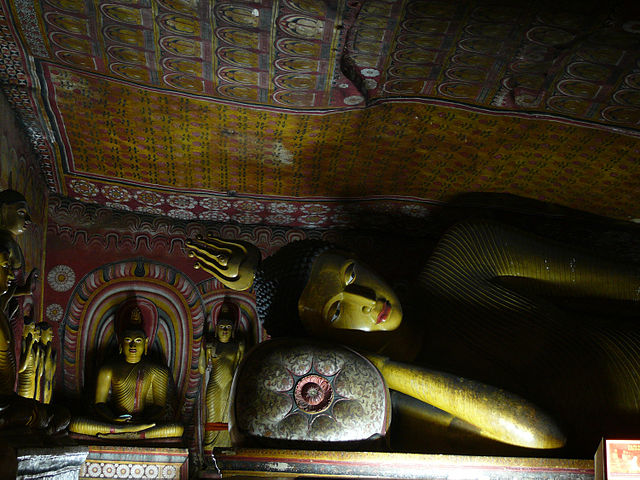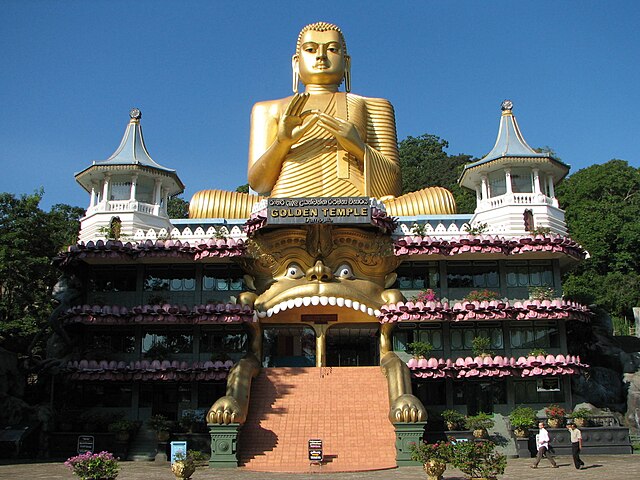

Exploring the Enchanting Dambulla Rock Temple in Sri Lanka
Nestled in the heart of the resplendent island nation of Sri Lanka, the Dambulla Rock Temple stands as a testament to both ancient craftsmanship and enduring spirituality. This remarkable UNESCO World Heritage Site has captivated travelers for centuries, offering a window into the island’s rich cultural heritage and inviting them to immerse themselves in a truly awe-inspiring experience.
A Gateway to History
Dambulla Rock Temple, also known as the Golden Temple of Dambulla, is a complex of cave temples that dates back to over two millennia. Situated on a colossal rock outcrop, the temple complex comprises five distinct caves that have been meticulously carved and adorned to house an astonishing array of religious art and artifacts.
Architectural Marvels
Each cave within the Dambulla Rock Temple complex boasts its own unique ambiance and artistic treasures. As travelers ascend the stone steps leading to the entrance, they are greeted by Cave 1, which houses an immense reclining Buddha statue spanning 14 meters. The intricate detailing of the statue’s features and the surrounding frescoes is a testament to the exceptional craftsmanship of ancient Sri Lankan artisans.
Cave 2 offers visitors a chance to marvel at the stunning standing Buddha statues, each radiating a sense of tranquility and serenity. The interconnectedness of these caves provides a palpable sense of the devotion and reverence that have graced this site for centuries.
Spiritual Significance
Dambulla Rock Temple’s historical and spiritual significance is deeply rooted in Sri Lanka’s Buddhist heritage. Legend has it that King Valagamba sought refuge in these very caves during a time of exile, later transforming them into a place of worship upon reclaiming his throne. Today, the temple remains a sacred pilgrimage site for Buddhists, drawing devotees from all corners of the globe who come to pay their respects and seek blessings.
Immersive Travel Experience
For travelers venturing to Sri Lanka, a visit to the Dambulla Rock Temple promises an immersive journey into the heart of the island’s cultural tapestry. The exploration begins with the ascent up the steep staircase that leads to the temple’s entrance. As travelers climb higher, the panoramic views of the surrounding lush landscape provide a tantalizing taste of the treasures awaiting them.
Upon entering the caves, the air is thick with an air of reverence. The interplay of natural light with the golden hues of the statues and the vivid frescoes creates an ethereal atmosphere that envelops visitors in a sense of awe. The presence of resident monks adds to the authenticity of the experience, allowing travelers to witness the daily rituals and practices that sustain the spiritual life of the temple.
Practical Considerations
For those embarking on this unforgettable journey, there are a few practical considerations to keep in mind. The best time to visit the Dambulla Rock Temple is during the early morning or late afternoon, as the cooler temperatures and softer lighting enhance the overall experience. It’s recommended to wear modest clothing as a sign of respect, and visitors should be prepared for a moderate hike up to the caves.
Conclusion
The Dambulla Rock Temple stands as a testament to the enduring spiritual and artistic legacy of Sri Lanka. For travelers seeking not only a glimpse into the island’s history but also a deeply immersive encounter with its cultural soul, this temple complex offers an unparalleled experience. As visitors explore the intricately adorned caves, bask in the breathtaking views, and engage with the spiritual rhythms of the site, they are sure to leave with a newfound appreciation for the remarkable fusion of heritage and spirituality that defines the Dambulla Rock Temple.
